With classes in PHP, you significantly expand your possibilities in object-oriented programming. Classes are the fundamental building blocks of this programming language and allow for a clear structuring of your code. If you want to delve more into the creation and use of classes in PHP, you're in the right place.
Key Insights
- Classes are the basis of object-oriented programming in PHP.
- The class name should match the file name.
- Properties and methods are the main components of a class.
Step-by-Step Guide
1. Creating a New PHP File
To begin, you should create a new file to define your class. For this purpose, you should ideally name the file database.php, as it will contain the Database class. Why is this important? It provides you with clarity and helps you organize your code better.
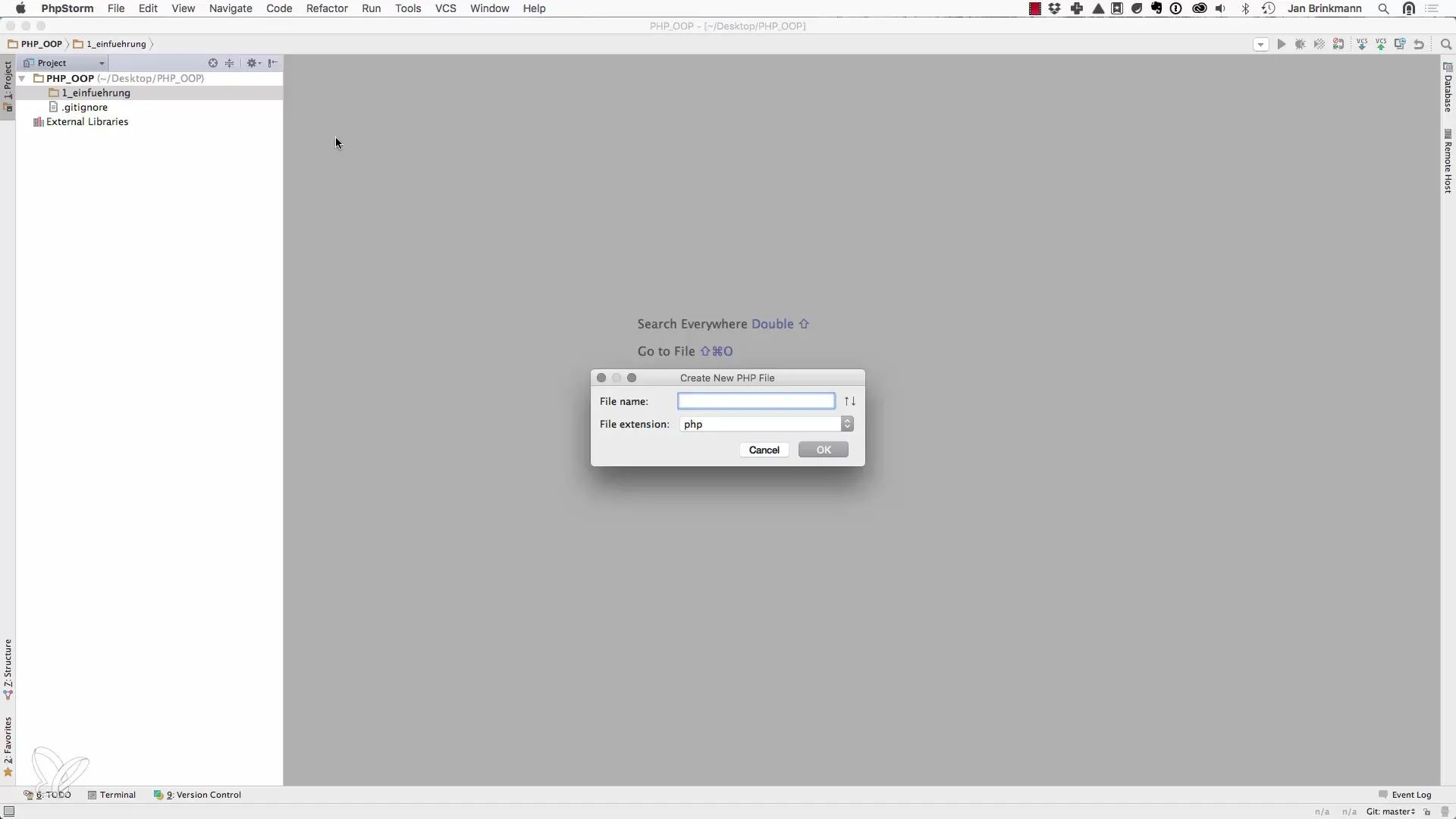
2. Defining the Class
In your new PHP file, you start with the class definition. The keyword class indicates that you are defining a class now. You name the class Database and then open curly braces. Everything you define between these braces belongs to this class.
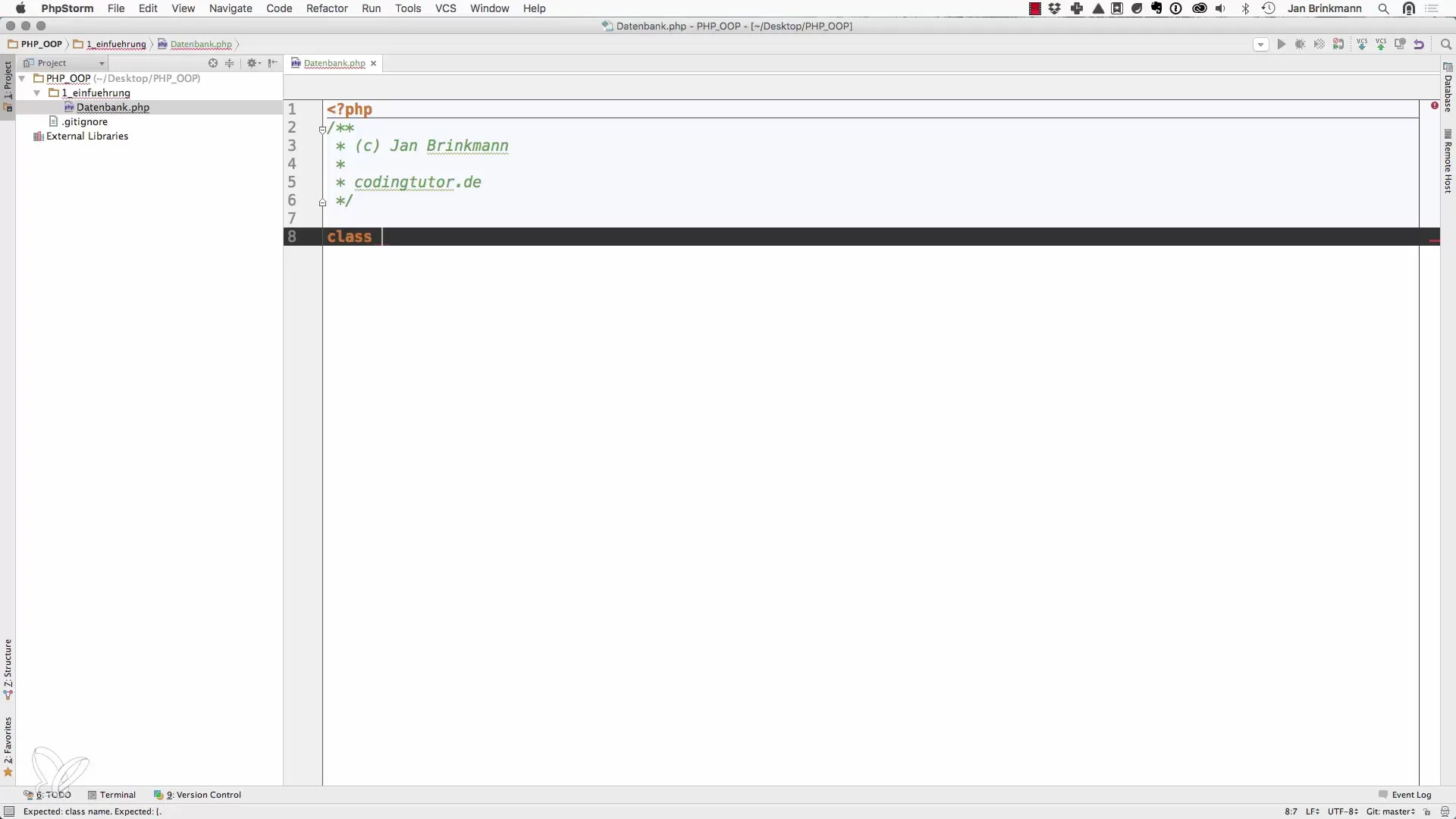
3. Adding Properties
Properties are attributes associated with the class. You decide to add a property called type. Set the default value to MySQL. Properties are used to describe the various states or characteristics of an object.
4. Using Visibility Modifiers
For the visibility of your properties, you should use the public modifier. There is also private, which means it can only be accessed within the class. Making this decision affects how you can later interact with the class and its objects.
5. Defining Methods
You add a method called getType that returns the value of the type property. This method allows access to the private or protected property if you decide to change visibility. This method is initiated with public function.
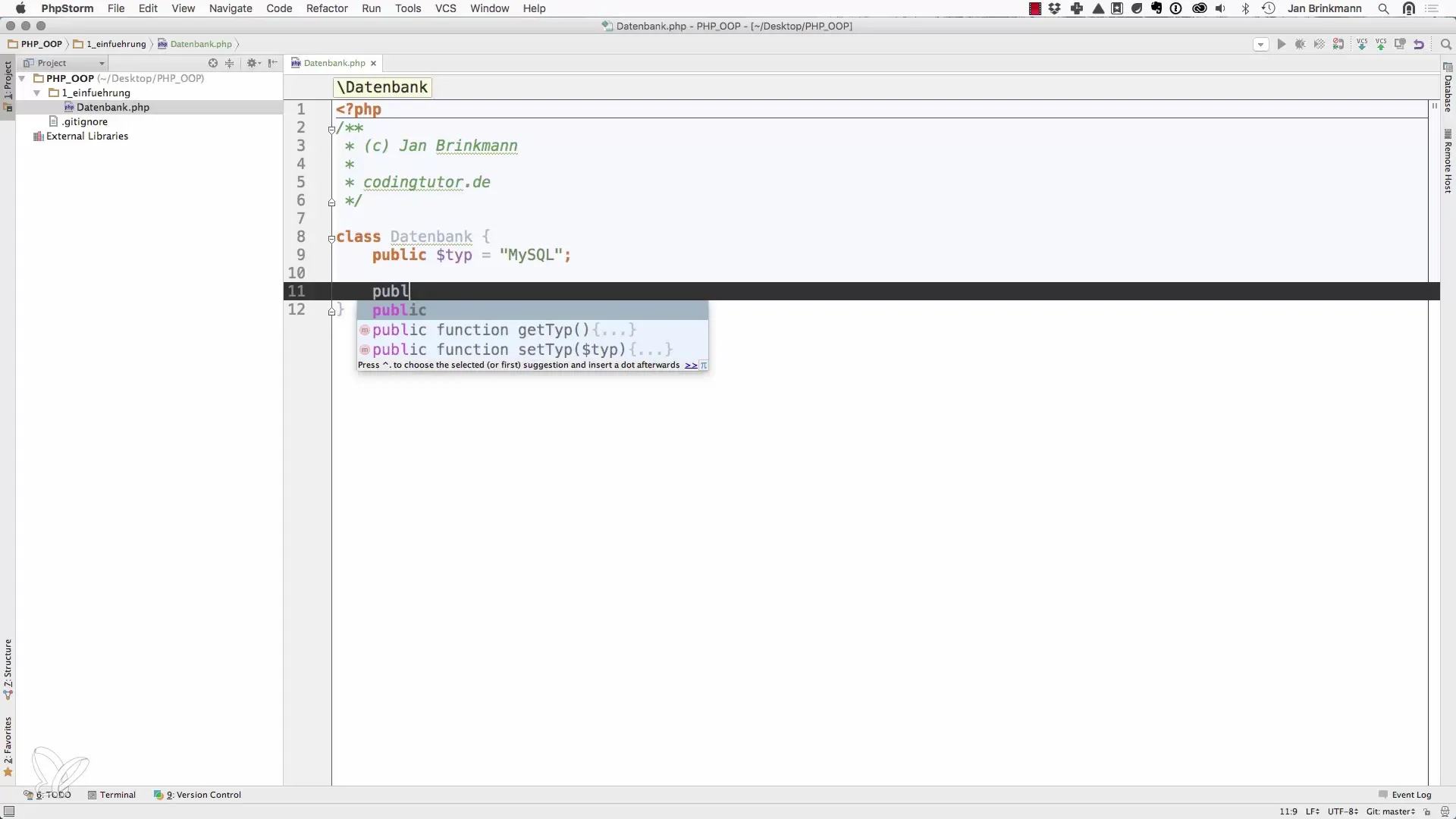
6. Return Value of the Method
Within the method, you use the return statement to return the value of the property. In your case, type will be returned. This is essential for extracting data from a class and allows you to interact with objects of your class.
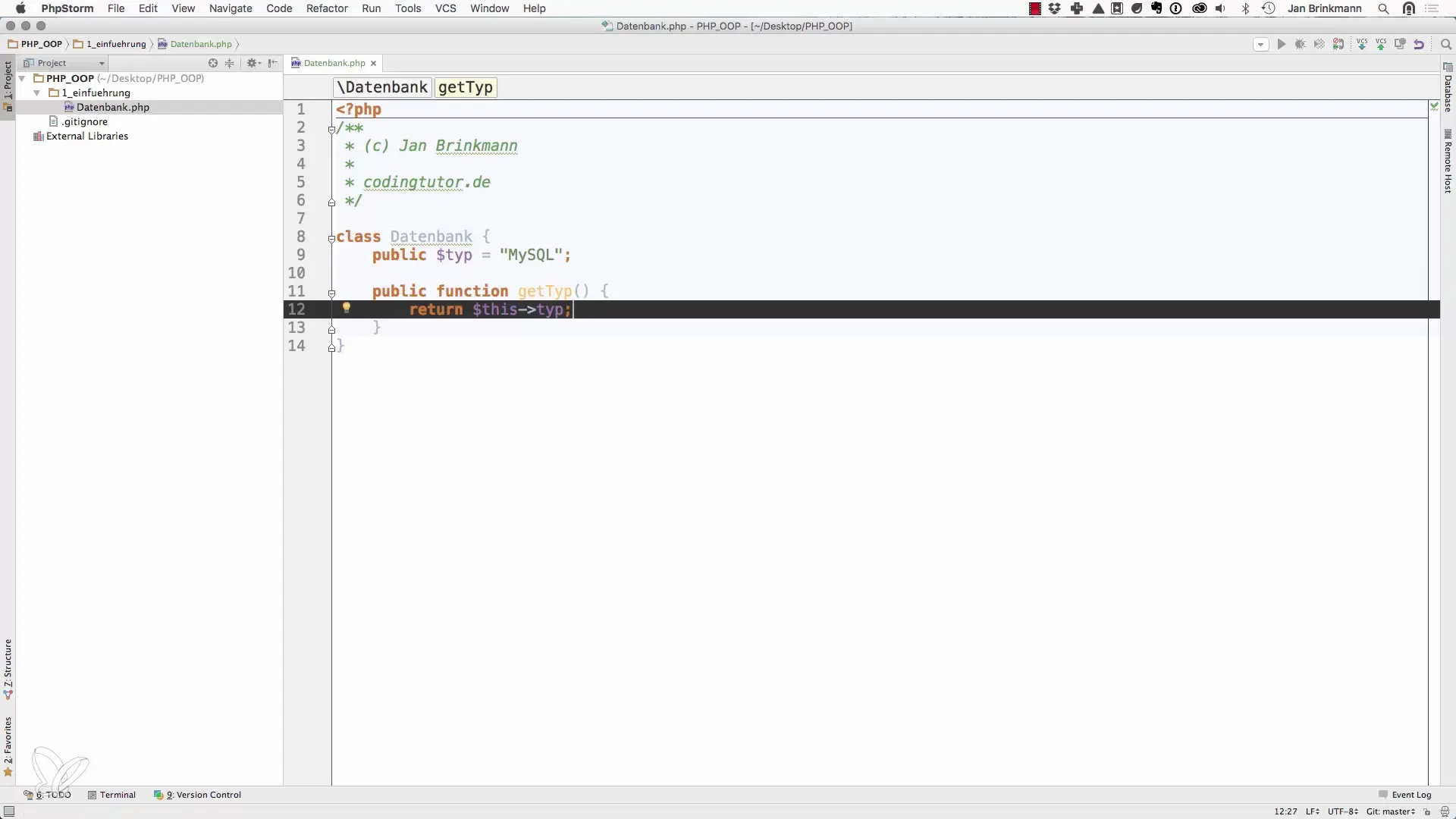
7. Summary of the Class Definition
In summary, you have created a Database class that contains a type property and a getType method. The structure of this class is simple, but it lays the foundation for more complex applications. You now have the basis on which you can build further, whether it be through creating instances or implementing additional methods.
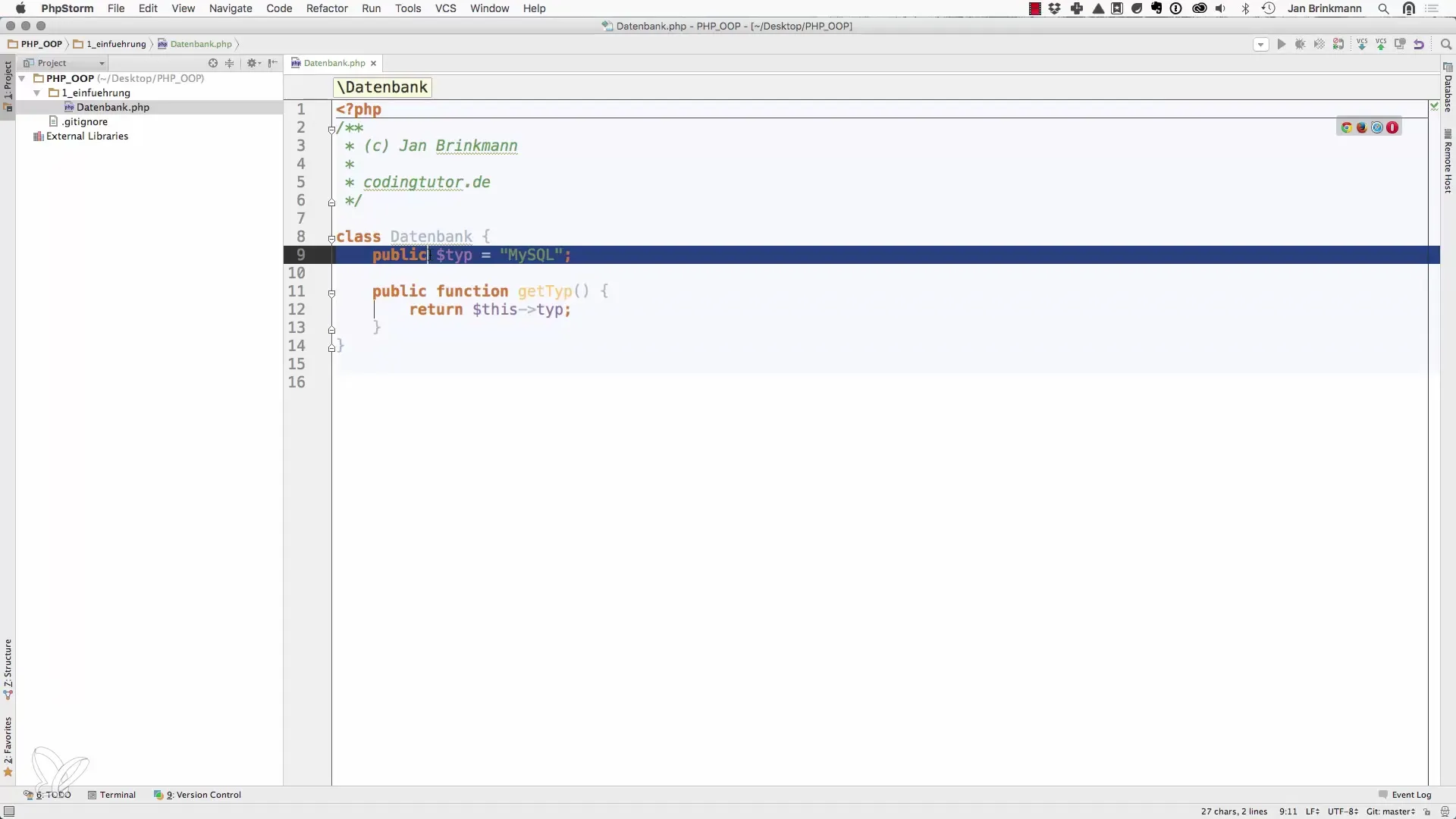
8. Outlook on the Next Video
In the next step, you will learn how to create instances of the Database class. This means you will generate objects based on the class you have defined. This knowledge is crucial for tapping into the full potential of object-oriented programming.
Summary – Object-Oriented Programming in PHP: Basics of Classes
What you have learned in this guide lays the foundation for a deeper engagement with object-oriented programming in PHP. Classes, their properties, and methods form the central structure for any more complex PHP app.
Frequently Asked Questions
What is a class in PHP?A class is a blueprint for objects that defines properties and methods.
What should I name a PHP file that contains a class?It makes sense to match the file name with the name of the class.
What are visibility modifiers?Visibility modifiers like public and private regulate access to properties and methods.
How do I define a method in a class?With public function followed by the method name and curly braces, you can define a method.
What is the difference between properties and methods?Properties store data, while methods are functions that perform operations on that data.


